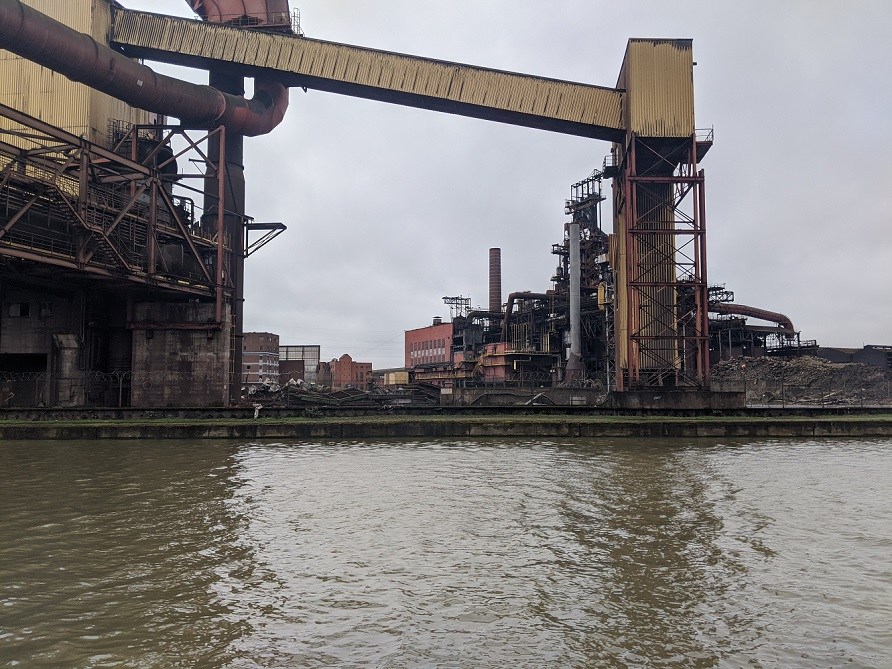Standing on the edge of a canal, surrounded by an oppressive wasteland of industrial decline, it’s not particularly hard to see why Charleroi is often considered the black sheep of Belgian cities.
Late on a Sunday in February, even the short walk from the station to the bank of hotels reveals a city of contrast.
My impression is quite bleak. As I walk, the only noises breaking the imposing silence are dog barks, police sirens, and the indignant yells of teens being questioned by police. On the surface, the scene – and the fact that it plays out against the backdrop of a former industrial hub – isn’t exactly the most appealing to someone who’s never been here before.
A more accurate view easily takes hold with a bit more nuance. It’s quiet because it’s late on a Sunday evening by a train station. The youths are bored, the police inquisitive, and the barks belong to a massive-but-friendly dog. The industrial skeletons? Picturesque in an oddly appealing way, even as it starts to rain.
Founded in 1666, Charleroi is still relatively young, and with its 201,000 residents it can also call itself Wallonia’s second-biggest city. It sits on the bank of the Sambre river, in the heart of the "Black Country" – a moniker given to the region due to the presence of coal mines.
In 2008, readers of Dutch newspaper, De Volkskrant, labelled it the “ugliest city in the world”, a dubious title that was swiftly picked up by several other media outlets. Now, over 10 years later, Charleroi is trying to move past that title by embracing – and even promoting – its urban explorer appeal.

© JJ
For many, a hunt for the historic, the gastronomic and the alcoholic is the driving force behind a trip to Belgium. It’s safe to say that the majority of tourists probably didn’t come to see the city of Charleroi itself, but many likely passed through its airport.
In fact, Charleroi airport dominates the international view of the city. To say Charleroi mostly comes up in conversations as an answer to the question “where are you flying to?” would not be an exaggeration. The select few who do choose to visit the city as a tourist destination are typically there to see the remnants of its former industrial heyday.
The Charleroi Safari
In the cold light of day, Charleroi quickly becomes a different city than the one I saw the night before. Abandoned cafes and former fast food joints sit beside a sprawling metropolitan shopping centre less than a 5-minute walk from the station.
The centre is part of a successful push to revitalize the downtown and north-western quarters, but that’s not what people are here to see. Rather, it’s this new trendy neighbourhood’s backdrop that still brings wannabe urban explorers to this city. Rising above the new facade of the city, cooling towers and brown husks indeed provide an astounding backdrop, and they only increase in frequency the further you walk.
Far from attempting to ignore the ghosts of the city’s past, the Charleroi tourism board has begun to lean into its shabby chic situation by offering urban discovery tours that take visitors through the “booming underground culture, street art, urban walks, trendy spaces, etc.”
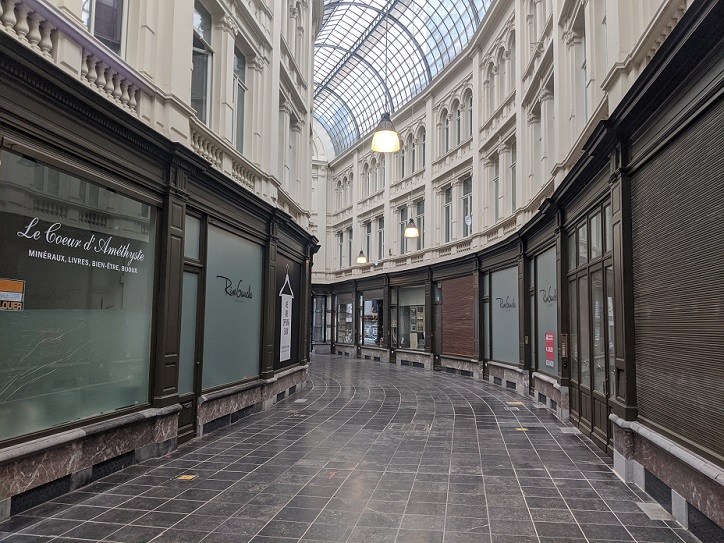
© JJ
One such tour, which rose in infamy before its official acceptance by the city, is the “Charleroi Adventure - City Safari”. This tour has long been taking tourists and locals alike to the sorts of places they would otherwise never visit.
“Yeah, the council didn’t like me for a bit. Now they’re doing what I do too, so I guess I won,” explains Safari leader Nicolas Buissart, as he sweeps an arm across the cluttered horizon.
‘Nico’ runs the tour of the less obvious parts of the city. Equal parts history and urban exploring, this tour focuses on everything from the decline and rebirth of the city centre to a wander through the graveyard of its industrial heritage. What started as a passion project has now developed into a full-time position, and his tour has been steadily drawing attention from across the globe for over 10 years.
“I don’t do this because I hate the city, far from it. I want to teach people about the history of Charleroi, show them how it got here, how it became so renowned for being ugly.”
It’s the city’s “ugliness” – and the abrasive charm that comes with it – that attracts tourists to the city, as cultural activities begin to warp the international opinion of the city.
The tour opens with a recap of the city’s remarkable capitalist growth, and Nico’s tongue-in-cheek explanation slyly offers up a correlation between the changes of the past years, the opening of new brasseries and the rise of people wearing pink trousers.
Shortly after, attention turns towards the edge of the city centre and the start of the industrial zone. 500 meters is all it takes for the pink trouser metropole to vanish completely.
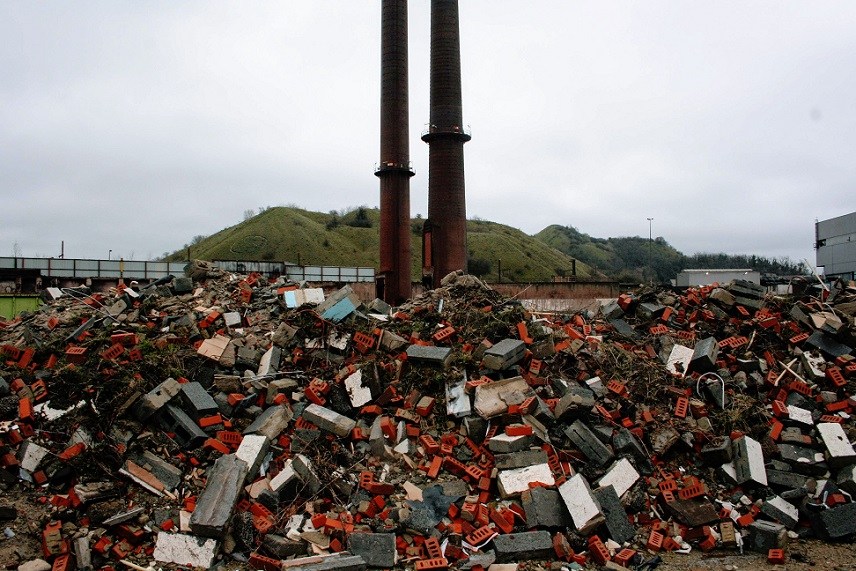
© JJ
The skeletons of industry are everywhere, from the rusting factories to the tugboats full of scrap metal. Yet, once the roar of the motorway fades, everything becomes remarkably calm.
The industrial graveyard
There is still noise, of course. Smelters belch, hydro machines slosh with unknown purpose, and overloaded boats sail gracefully by, but for the most part, the canal side is equal parts serene and scary in its silence.
"Charleroi held on to its big factories for as long as it could, and that’s probably what led us to our darkest time, to high levels of unemployment, and these skeletons you still see today,” explained Margaux Baleriaux, PR & Communication manager for CATCH.
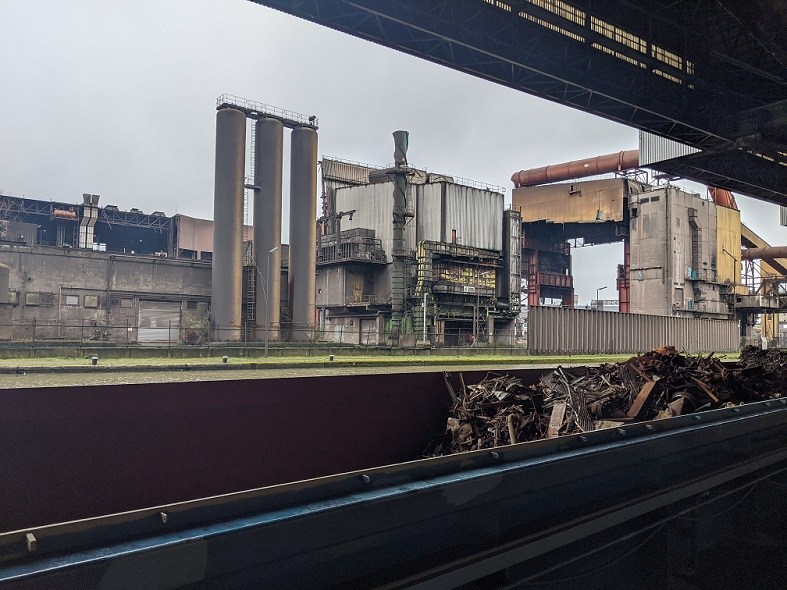
© JJ
This decline hit a climax when Caterpillar - the biggest industrial employer in the region - announced the closing of its factory in 2016. “Around 4,000 people lost their jobs then, it was the ultimate shock for the region which pushed unemployment figures up drastically,” Baleriaux said. “But”, she added, “as Churchill said: 'Never waste a good crisis.'”
It was this moment that sparked initiatives to get the city back on track, leading to the creation of the strategic CATCH plan and ultimately to the CATCH Delivery Unit which Baleriaux represents, and the work they strive to help implement.
This work has, in turn, led to projects including the conversion of the former Charleroi postal sorting office – an industrial site of 5,000 m2 which lay vacant for more than 10 years – into an innovation centre dedicated to advanced manufacturing, and a training centre dedicated to digital skills.
These new developments, and the positive impact they have on the city and its people, provide for the increase in business tourism coming to the area and the changes that come with it.
For the explorer, however, it’s Nico’s Charleroi they want to see.
Reaching the end of the canal side area, the tour passes through less active parts of the city, only to suddenly be greeted by a long-closed local church, and a smokestack looming in the background.
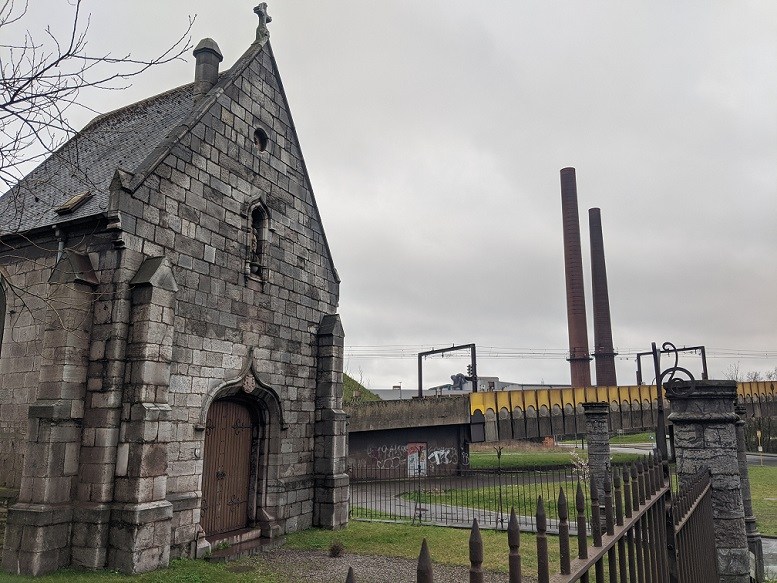
© JJ
This architectural juxtaposition isn’t as unusual as it first seems. Spread throughout the mismatched houses that make up the suburban parts of the city are a number of impressive buildings that wouldn’t look out of place in locales more known for their culture.
In fact, Charleroi’s growing real estate market has some of the same architecture you would expect to find in Brussels. The ornate balconies and chiselled stonework, which would see a house go for €600,000 in Brussels, are selling in Charleroi for far less, as people who grew up here move to return.
Support
As quickly as it arrives, however, suburbia too gives way to a train station, and an opportunity to go a bit off-road.
In a moment seemingly ripped from every coming-of-age movie ever, the group walks along the side of the train tracks, only stopping to admire an abandoned train depot partially hidden in the foliage.
While it’s now unofficially used as a paintball arena and graffitti hangout, this is just one of countless derelict logistics buildings littering the countryside.
“Some spaces are being used for cultural activity, some are totally closed off, and some are just lying empty,” Nico explains. When asked which of the three this one is, Buissart shrugs it off with a laugh.
It’s not the first time that's happened.
After more walks by nondescript machines and the occasional still-running factory, the tour ends up back where we started, back in the marketable front of Charleroi.
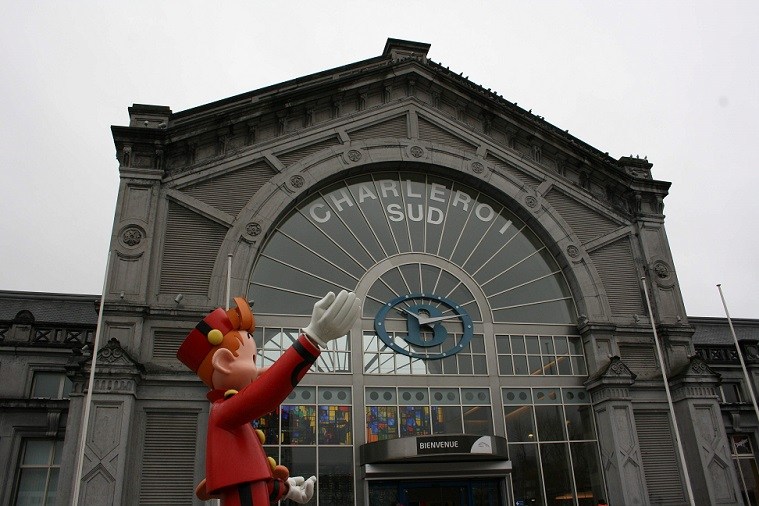
© JJ
Viewed from the outside, Charleroi is two places, but internally it seems to work.
There’s the gritty, urban jungle appealing to wannabe explorers and journalists. The city that lost 10,000 jobs between 2005 and 2015, and struggles to shake its ugly reputation. That’s the city of the industrial giants.
On the other hand, there’s the place Charleroi as a city, and a region, aims to be. “It has suffered from a number of big factory closings and massive job losses, but few people know we have since actually created as many jobs as the number we lost. Our priority now is to keep that job creation curve and achieve 10,000 direct & indirect jobs by 2025 by focusing on our successful ecosystems,” explains Baleriaux.
That’s the new city of progress, expanding from the centre outward, even as it’s other half attracts thrillseekers.
The arrival point is the same, the station, and shining in the afternoon sun it does look a lot more appealing. It’s an imposing glass structure in front of a grand promenade, but no matter which way you look at it, it’s hard not to see a factory too.
Jules Johnston

